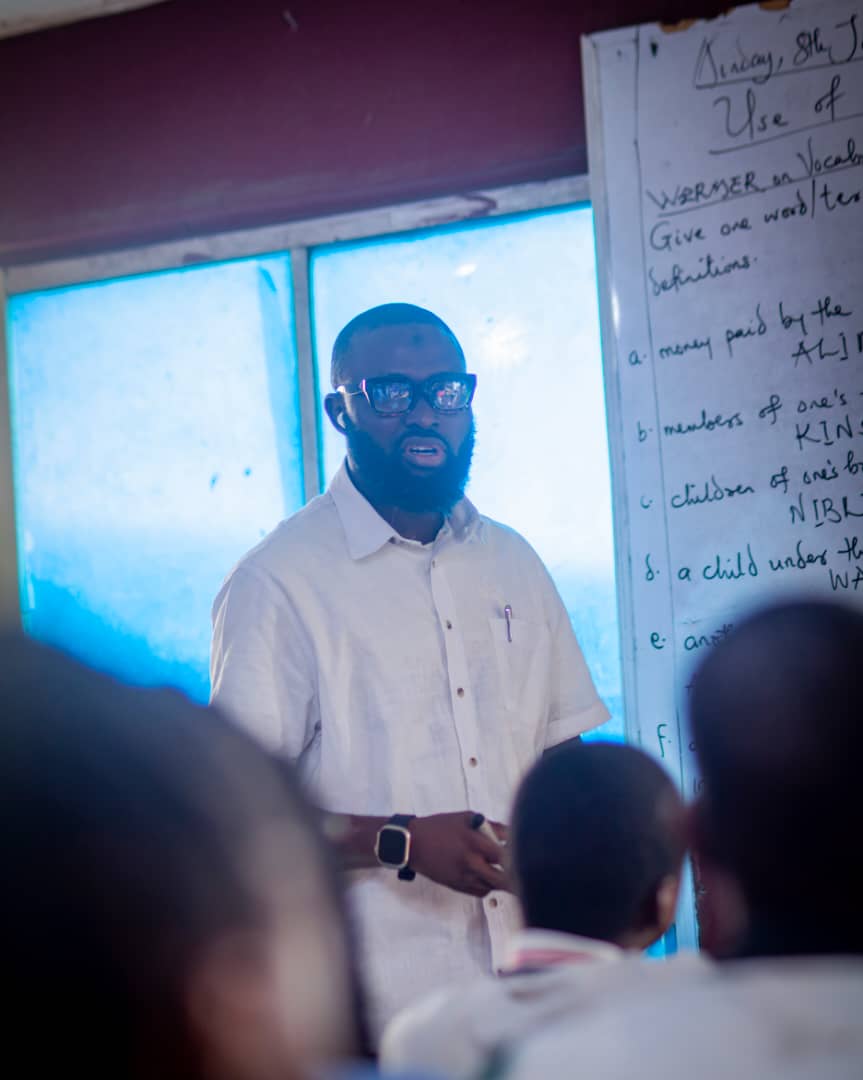As we mark this year’s teacher’s day celebration,the role of a teacher is both profound and diverse,from the chalkboard to the white marker board. Teachers are responsible for not only imparting knowledge but also mentoring, guiding, and influencing young minds. A great teacher is not simply one who delivers lessons from a textbook. Instead, great teaching goes far beyond the confines of a classroom, shaping minds, inspiring creativity, and fostering a love for learning that lasts a lifetime.
However, the question arises: what makes a teacher truly great? A great teacher is passionate about both their subject and the act of teaching. This passion is contagious, as students can sense when a teacher is genuinely enthusiastic about what they are teaching. A passionate teacher doesn’t just teach facts; they inspire curiosity, encourage exploration, and make learning enjoyable. When students see that their teacher loves what they do, they are more likely to be engaged and motivated to learn.
One of the most important traits of a great teacher is patience. Every student learns at a different pace, and great teachers understand that not everyone will grasp concepts immediately. Instead of becoming frustrated, they offer encouragement and alternative explanations until the student understands.
Patience is especially important when dealing with students who face challenges in their learning. A great teacher supports these students and helps them grow without making them feel inadequate. Effective communication is at the heart of great teaching. A teacher must be able to clearly explain complex concepts in ways that are understandable to all students, regardless of their learning style. Great teachers also know how to listen, taking the time to understand their students’ concerns and questions. Communication goes beyond words; great teachers use body language, eye contact, and tone of voice to create a warm and engaging atmosphere.
Teaching is not just about conveying information; it’s also about caring for students as individuals. A great teacher recognises the emotional and social challenges that students may face, whether it’s stress from exams or personal issues at home. They create a supportive environment where students feel safe, understood, and valued. By showing empathy, teachers build strong relationships with their students, which enhances trust and respect in the classroom.
Education is not static, and neither are students. A great teacher is adaptable and willing to change their approach to meet the needs of different students. Whether it’s adjusting lesson plans to accommodate diverse learning styles or finding creative ways to make a subject more relatable, adaptability is key to effective teaching. Great teachers also understand that the world is changing, and they embrace new technologies and teaching methods to stay relevant.
Teaching involves a great deal of planning, from preparing lessons to grading assignments and managing a classroom. Great teachers are highly organised, ensuring that they stay on top of their responsibilities while creating a structured and orderly learning environment. Organisation also extends to time management, as great teachers know how to balance the curriculum with the need to give individual attention to students.
Great teachers are creative thinkers who bring innovation into their teaching. They look for new ways to present material, making lessons more engaging and interactive. Creativity in teaching might involve using storytelling, games, or technology to make a lesson more interesting. By thinking outside the box, great teachers find ways to make learning fun and accessible for all students.
A great teacher believes in their students’ potential and holds them to high standards. They expect their students to work hard and achieve their best, while also holding themselves accountable for the progress of their students. Setting high expectations pushes students to go beyond their comfort zone, encouraging them to develop resilience, discipline, and a strong work ethic.
The best teachers are also lifelong learners. They are always seeking to improve their knowledge and teaching practices. Whether it’s attending professional development workshops, reading up on the latest educational research, or experimenting with new technologies, a great teacher is always growing. This love for learning also sets an example for students, showing them that learning is a continuous process. Great teachers treat all students with respect and fairness. They create an inclusive classroom environment where everyone feels valued and heard. Respect fosters a positive atmosphere where students are more likely to participate, share ideas, and take risks. Fairness ensures that all students are given equal opportunities to succeed, regardless of their background or abilities.
Beyond personal traits, great teachers employ a variety of teaching methods that enhance the learning experience. These methods are designed to cater to different learning styles, engage students, and encourage deeper understanding. Here are some of these methods.
1. Interactive Learning
Rather than simply lecturing, great teachers use interactive teaching methods that involve students in the learning process. This can include group discussions, problem-solving exercises, and hands-on activities. Interactive learning allows students to engage with the material actively and encourages collaboration and critical thinking.
2. Differentiated Instruction
Not all students learn in the same way, and great teachers recognise the need for differentiated instruction. This teaching method involves tailoring lessons to meet the individual needs of students. For example, some students may benefit from visual aids, while others may need more hands-on activities. By using a variety of teaching techniques, great teachers ensure that all students can access the material and succeed.
3. Student-Centred Learning
In a student-centred classroom, the teacher acts as a facilitator rather than a lecturer. This teaching method focuses on empowering students to take charge of their learning. Students are encouraged to ask questions, explore topics that interest them, and participate in discussions. By shifting the focus from the teacher to the student, this method fosters independence, curiosity, and a deeper connection to the material.
4. Use of Technology
Technology has revolutionised education, and great teachers embrace it to enhance their teaching methods. From interactive whiteboards to educational apps, technology provides teachers with new tools to engage students and make lessons more dynamic. It also allows teachers to personalise learning experiences, giving students access to resources that suit their individual learning styles.
5. Formative Assessment
Great teachers use formative assessments to monitor student progress throughout the learning process. This type of assessment is ongoing and helps teachers identify areas where students may need additional support. By using quizzes, discussions, and feedback sessions, teachers can adjust their instruction in real-time to ensure that all students are making progress.
6. Inquiry-Based Learning
Inquiry-based learning encourages students to ask questions, investigate problems, and find solutions. Instead of providing students with all the answers, great teachers use this method to guide students in their discovery of new knowledge. This approach fosters curiosity, critical thinking, and problem-solving skills, all of which are essential for lifelong learning.
7. Collaborative Learning
Great teachers understand the power of collaboration in the classroom. They encourage students to work together on projects, share ideas, and learn from one another. Collaborative learning not only promotes teamwork but also allows students to gain new perspectives and develop their social skills. It teaches students how to communicate effectively, resolve conflicts, and work towards common goals.
8. Real-World Applications
To make learning more relevant, great teachers connect lessons to real-world applications. Whether it’s relating mathematical concepts to budgeting or using historical events to discuss current issues, this teaching method helps students see the practical value of what they are learning. Real-world connections also make lessons more engaging and memorable.
9. Feedback and Reflection
Great teachers provide regular feedback to help students improve. Constructive feedback highlights areas of strength and areas for growth, helping students understand how to improve their work. Teachers also encourage reflection, asking students to think about their learning process and how they can continue to grow. Feedback and reflection foster a growth mindset, where students understand that learning is a journey rather than a destination.
10. Positive Reinforcement
A great teacher recognises and celebrates student achievements, no matter how small. Positive reinforcement, whether through praise, rewards, or encouragement, boosts student confidence and motivation. By focusing on progress and effort, great teachers create an environment where students feel valued and supported in their learning.
A great teacher is a combination of personal qualities and effective teaching methods that inspire, challenge, and support students. The impact of great teaching goes far beyond academic achievement; it shapes character, builds confidence, and instills a love of learning that lasts a lifetime. Great teachers leave a lasting mark on their students and contribute significantly to the development of society.














